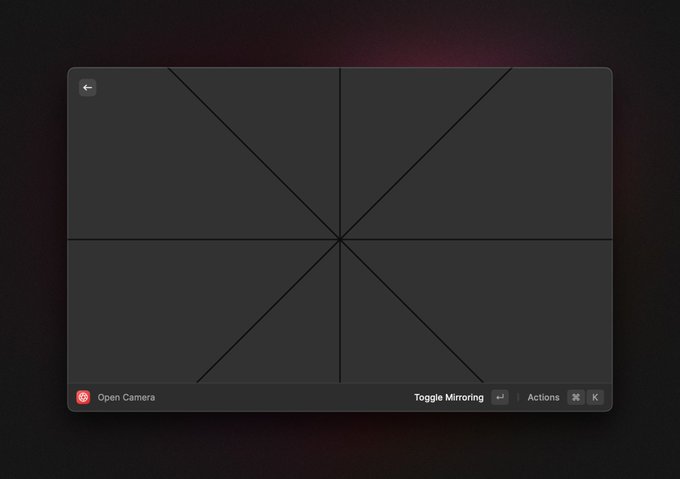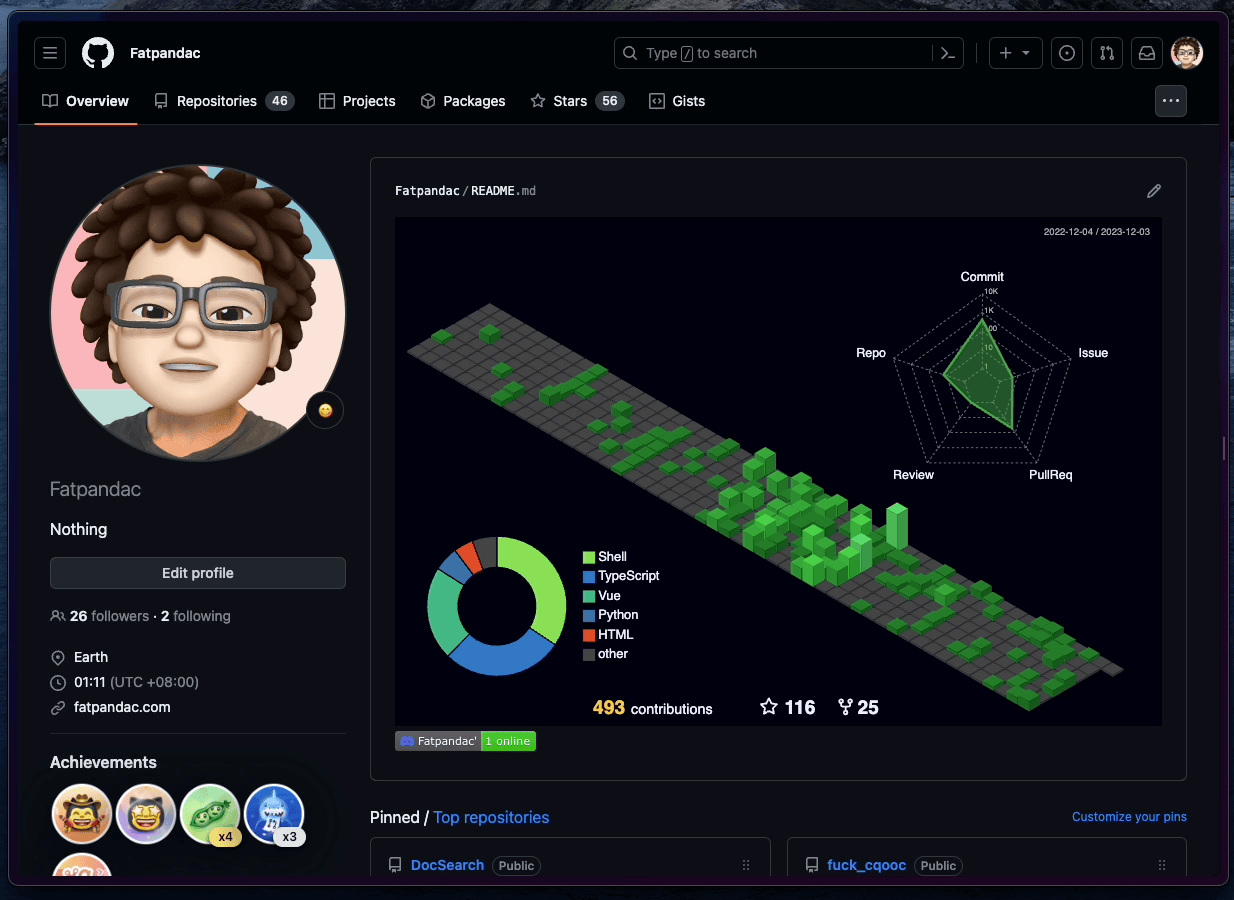实现相机快门动画
Fatpandac 2023/12/4 VueCSS
前段时间 Raycast 发布了最新版本 v1.63.0 (opens new window),这个版本的一个最重要的更新就是可以直接在 Raycast 调用摄像头并查看。 在 Raycast 打开摄像头之前会有一个快门动画,当我看到这个动画的时候就立马勾起了我的好奇心,刚好 Thomas Paul Mann (opens new window) 有发推文 (opens new window)介绍大致如何实现,于是我决定按图索骥实现一下。

从上面的 Raycast 动画截图可以看出是由八个直角三角行构成的,那么现在我们只需要实现一个直角三角形之后再依次旋转 45 度,这样就可以实现上图中的布局了。 那么 直角三角形 组件的实现如下:
<template>
<svg
:style="{
height: `${traingleSide}px`,
width: `${traingleSide}px`,
// 使得元素居中
top: -traingleSide + videoHeight / 2,
left: -appendWidth,
rotate: `${45 * idx}deg`,
transformOrigin: 'bottom right',
}"
>
<polygon
fill="#323232"
stroke="black"
stroke-width="2"
:points="[
[0, 0],
[0, traingleSide],
[traingleSide, traingleSide],
]"
/>
</svg>
</template>
<script setup>
import { computed } from "vue";
const props = defineProps({
// 传入视频显示大小
videoWidth: Number,
videoHeight: Number,
// 传入需要直角三角边多加的大小
// 以便可以在动画的时候能够依旧覆盖得住 video
appendWidth: Number,
// 当前组件为第几个 以计算旋转角度
idx: Number,
});
const traingleSide = computed(() =>
Math.ceil(props.videoWidth / 2 + props.appendWidth)
);
</script>
上面就是 直角三角形 组件了,之后就可以写主页面了:
<template>
<div class="h-screen w-screen flex justify-center items-center">
<div
ref="videoBox"
class="w-2/3 border-gray-200 rounded-md border-3 border-solid
shadow-black aspect-video box-content relative overflow-hidden"
>
<div
class="relative"
:style="{
width: `${videoWidth}px`,
height: `${videoHeight}px`,
}"
>
<video
ref="video"
class="rounded-md w-full h-full"
style="filter: brightness(0.1)"
/>
</div>
<Traingle
ref="tList"
class="absolute"
v-for="(_item, index) in Array(8)"
:idx="index"
:videoHeight="videoHeight"
:videoWidth="videoWidth"
:appendWidth="150"
/>
</div>
</div>
</template>
<script setup>
import { onMounted, ref } from "vue";
import { useAnimate, useElementSize } from "@vueuse/core";
import Traingle from "./components/traingle.vue";
const FIX_VIDEO_BLACK_WIDTH = 6;
const video = ref(null);
const videoBox = ref(null);
const { width: videoWidth, height: videoHeight } = useElementSize(videoBox);
const tList = ref([]);
const openCameraAnimate = () => {
const options = {
fill: "forwards",
duration: 800,
easing: "ease-in-out",
};
// 使得三角可以以一个接近圆形的开口不断扩大并退出
tList.value.map((item) =>
useAnimate(
item,
{
transform: `translate(
${Math.tan(Math.PI / 8) * videoWidth.value}px,
-${videoWidth.value}px)`,
},
options
)
);
useAnimate(video, { filter: "brightness(1)" }, options);
};
onMounted(() => {
// 调用摄像头
navigator.mediaDevices
.getUserMedia({
video: {
height: videoHeight.value,
width: videoWidth.value + FIX_VIDEO_BLACK_WIDTH,
},
})
.then((stream) => {
video.value.srcObject = stream;
})
.catch((error) => {
console.error("访问摄像头失败:", error);
});
// 摄像头内容加载好后显示并播放动画
video.value.onloadedmetadata = () => {
video.value.play();
openCameraAnimate();
};
});
</script>
这样就可以实现相机快门动画了!
